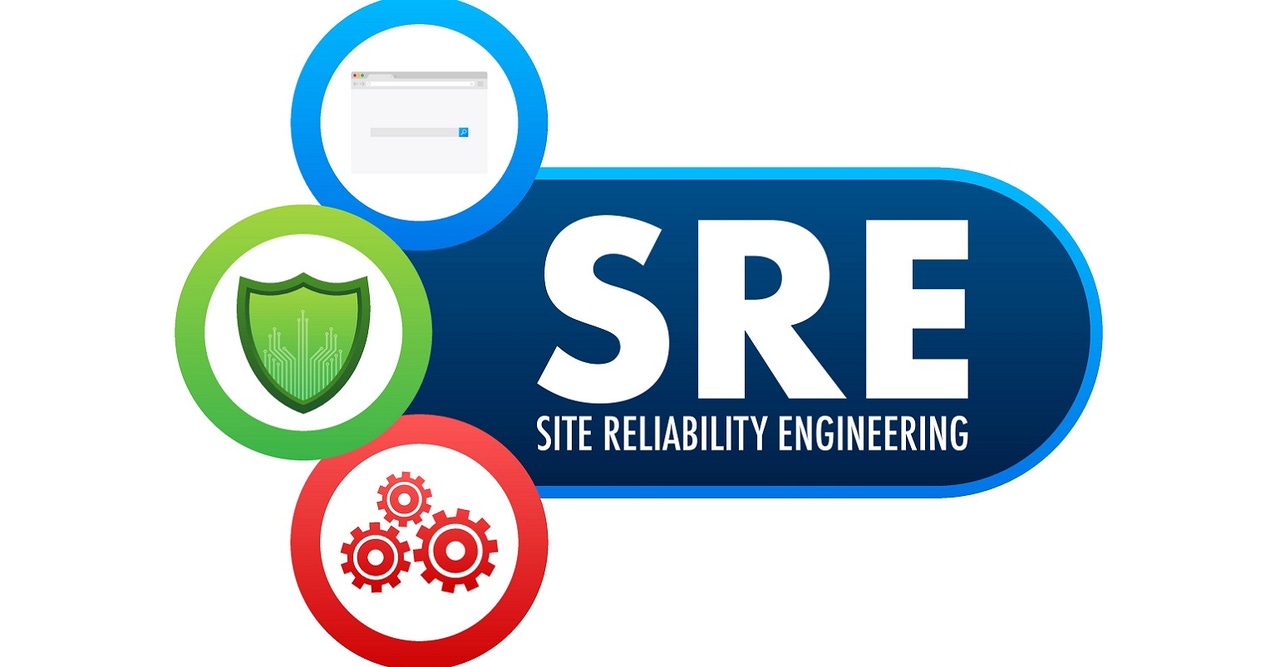How to Become a Site Reliability Engineer: A Step-by-Step GuideHow to Become a Site Reliability Engineer: A Step-by-Step Guide
Are you looking for a career in site reliability engineering? This guide will show you the qualifications and skills necessary to become an SRE.

If you like keeping complex systems running — not to mention being paid well — a career as a site reliability engineer, or SRE, might be up your alley. By managing the reliability and performance of applications and infrastructure, SREs play a key role in the IT operations of many businesses today. SREs are also among the highest-paid members within IT organizations, making work as an SRE particularly lucrative.
This guide breaks down everything you need to know to get started as an SRE, including an overview of what SREs do, which skills they need, and how to become an SRE.
What Does a Site Reliability Engineer Do?
The main job of a site reliability engineer is to identify and implement controls that optimize IT systems for reliability.

Salary Survey button resized_1
In this context, reliability means the ability of systems to remain operational and meet performance requirements. So, SREs spend their time determining which levels of performance and availability a business requires from its applications and infrastructure, then setting up tools and processes to maintain those levels of availability.
In addition, when a problem occurs that impacts system reliability — such as a server failure or an application that becomes very slow to respond to user requests — SREs are typically on the front line of incident response. SREs assess failures and play a leading role in coordinating the work necessary to restore functionality to the necessary level.
If the work that SREs do sounds similar to the work of IT engineers, it's because it is. Traditional IT roles and SRE roles overlap to a large extent, since both types of roles involve managing systems and troubleshooting problems. The difference, though, is that for SREs, reliability management is a primary responsibility, whereas for IT engineers it's just one of several areas of responsibility.
The term site reliability engineer was born in the first decade of the twenty-first century at Google, which built SRE teams internally to support its applications and websites. It wasn't until the mid-2010s, however, that businesses of all types began adding SRE roles in a bid to enhance the user experience that they delivered through digital services.
What Are the Skills and Qualifications Needed to Become a Site Reliability Engineer?
The specific skills that you'll need to work as an SRE depend, in part, on which systems you are supporting. If you're working with Linux-based servers, for example, mastery of Linux is more important than it would be if you were an SRE at a Windows-centric company.
That said, virtually all SREs should possess a core set of basic skills. Following is an overview.
Knowledge of Systems and Processes for Monitoring
Monitoring and observability are central to the work that SREs perform. You need to be able to monitor systems for reliability problems in order to optimize the reliability of those systems.
Thus, SREs must understand which data sources — such as logs and metrics — are necessary for monitoring and observability. They should also be familiar with the tools and technologies, such as OpenTelemetry and eBPF, that provide insight into modern applications and servers.
Understanding of Web and Application Architecture
SREs must know how the systems they manage work. That means understanding how websites are hosted, as well as how different types of applications (like monoliths and microservices apps) are designed.
This knowledge is critical because different architectures require different approaches to reliability. For example, if a microservices app fails, you'll typically need to identify and redeploy the individual microservice that triggered the failure. But when a monolith crashes due to a bug, you have to sort through the entire monolith's codebase, fix the bug, and then redeploy the whole app.
Programming and Software Engineering Skills
Site reliability engineers aren't programmers, but they do need to know how programming works so that they can coordinate effectively with software developers. To do this well, they need to know not just the basics of programming itself, but also how modern software engineering processes, like CI/CD, operate.
Cloud Platform Knowledge
Similarly, although managing cloud applications and environments is not the main job of SREs, an understanding of cloud architectures and a familiarity with the concepts and tooling of major cloud platforms are important to work as an SRE.
Troubleshooting Processes
When something goes wrong in an IT environment, SREs need to know how to troubleshoot the issue quickly and effectively. Troubleshooting requires the ability to interpret all available data, identify the most likely causes of a failure, and then test them until you trace the issue back to its root cause.
In modern environments built with complex architectures, troubleshooting can be challenging because surface-level problems (like a slow application response rate) may provide little clue about the underlying cause (such as a memory leak in a back-end microservice that is slowing down the application's ability to pull data from a database).
Ability to Work in a Team
Some businesses have just one or a few SREs on staff. Others have large SRE teams. Either way, SREs need the skills to work effectively with others because even if you're the only SRE at your company, you'll have to interface with other stakeholders on a routine basis to prevent and fix problems.
Those stakeholders include not just other engineers, like developers and IT operations engineers, but also people in non-technical roles. For example, an SRE tasked with managing reliability for an app used by the marketing department will need to talk to non-technical employees from the department to understand which levels of performance they require from the app.
Understanding of SLAs, SLIs, and SLOs
SREs need to know three key acronyms by heart:
Service Level Availability (SLA), which is a measure of the level of performance that a system needs to achieve. SLAs determine which availability and performance outcomes SREs are responsible for meeting.
Service Level Objectives (SLOs), which define specific metrics that are part of an SLA.
Service Level Indicators (SLIs), which measure the actual performance of a system. SREs track SLIs for individual SLOs to know how well they are doing in meeting their SLAs.
How to Become a Site Reliability Engineer
Unlike more traditional IT roles, such as software developer and IT engineer, there are few college courses or training programs designed to prepare you to become a site reliability engineer.
Still, there are steps you can take to maximize your chances of a successful career in site reliability engineering. Everyone's journey to becoming an SRE is different, of course, but the process typically looks like the following:
Step 1: Choose a Specialty
Start by deciding which type of environments or systems you want to support as an SRE. Do you want to work with Linux systems, Windows systems, or both? Which cloud platforms will you specialize in? Which types of applications and architectures most interest you?
Making choices like these early on will help you focus your training in areas that maximize your ability to land work as an SRE.
Step 2: Get the Necessary Training
Typically, you'll need some kind of formal training to become an SRE.
The most obvious route for obtaining that training is to go to college. Virtually no universities offer degrees in site reliability engineering, so if you choose the college route, you'll want to get a degree in a related field. Computer science is the most obvious choice of degree if you plan to work as an SRE, but a degree in IT can work, too. In some cases, you can also become an SRE if you have an educational background in data science or cybersecurity, since these fields, too, have considerable overlap with SRE.

Unlock the Secrets of IT Salary Trends
Alternatively, you can pursue a career as an SRE without a college degree by instead completing a coding bootcamp or online training program in computer science or a related field. It may be harder to find an SRE job if you lack a college degree in CS or a related discipline, but it's not impossible — and the educational process may be faster and cheaper.
Step 3: Gain Work Experience
It's relatively uncommon to become an SRE as your first job. Instead, most people who work as SREs held other roles in IT first. They were in positions like software development, IT engineering, or cybersecurity.
So, rather than applying for SRE jobs right after completing your education, consider looking for other roles that will allow you to establish yourself as an experienced IT professional. Although it's not impossible to land an SRE job with no prior work history in the IT industry, doing so can be difficult, given the expansive skill set that employers look for when hiring SREs.
Step 4: Pivot to Site Reliability Engineering
After working in a related role for at least a year or two, you can begin a career pivot into site reliability engineering.
To make the jump, look for SRE jobs that align with your technological skill set and background. Again, if you have experience with a particular cloud platform (like AWS), for example, look for SRE openings that focus on that platform.
Top Countries and Companies for Site Reliability Engineers
SRE positions exist in many countries and across a wide array of companies. However, if you're looking to start an SRE career, you're likely to find that the United States and Western Europe are regions where SREs are most in demand. Partly because the SRE concept was born in the United States, it has taken deeper root in Western societies than in other parts of the world.
You're also likely to find it easier to land an SRE job with a large company. The larger a company and the more complex its IT environments, the greater demand it will have for SREs. Smaller companies sometimes can't afford the high salaries that SREs command. They may also have simpler IT estates that their IT engineers can maintain without the specialized help of SREs.
Frequently Asked Questions About Site Reliability Engineering
What is a site reliability engineer?
A site reliability engineer is an engineer who specializes in defining and maintaining the levels of performance and availability that a company requires from its IT assets.
Which qualifications do I need to become a site reliability engineer?
There are no official qualifications to become a site reliability engineer; different companies have different requirements. In general, though, having a degree in computer science or a related field will put you in the strongest position to become a site reliability engineer.
What skill set is needed to become a site reliability engineer?
In general, skills involving computer science, cloud management, troubleshooting, and the ability to work as part of a team are crucial to become a site reliability engineer.
What are the job opportunities for a site reliability engineer?
Jobs for site reliability engineers are plentiful in most markets. However, you'll typically need some experience in other IT roles before you are competitive as a candidate for site reliability engineering jobs.
What is the salary range for a site reliability engineer?
As a site reliability engineer in the United States, you can expect to earn at least around $125,000. SRE roles at large companies, or those that require highly specialized skills, may pay several times that amount.

Salary Survey button resized_2
What kind of workplace environment can I expect as a site reliability engineer?
Some SREs work in an office, and others are remote. Either way, expect to collaborate closely with other engineers, as well as with non-technical employees, to define and achieve the business's reliability requirements. You should also expect to have to perform some after-hours work when systems fail unexpectedly.
About the Author
You May Also Like








.jpg?width=700&auto=webp&quality=80&disable=upscale)
